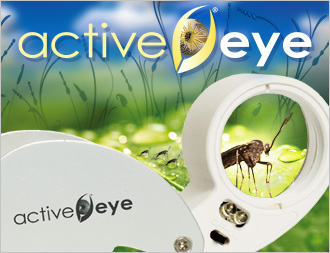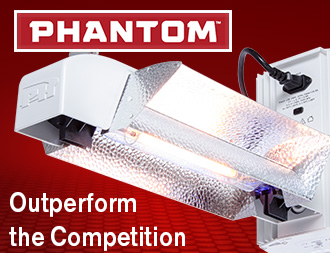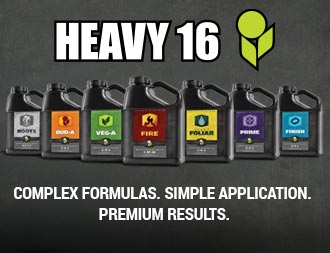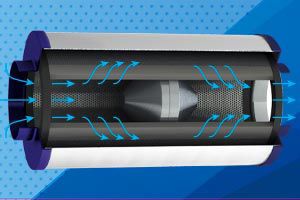Activated carbon filters are a widely used technology to reduce odors and control emissions from greenhouses and other growing applications. The ambient air is circulated through the activated carbon filter and returned to the greenhouse (scrubbing) or discharged outside (filtering). Understanding the basic guidelines of how activated carbon filters work will help the individual grower use the technology with greater reliability and lower overall cost.
For starters, activated carbon is basically a sponge that captures vapors that cause odors and takes them out of circulation in the greenhouse air. The level of odor-causing chemicals is lowered and thus the “odor”, which is the nose’s detection and quantification of the presence of non-air molecules, is reduced. At some level, called the “odor threshold”, the typical nose cannot detect the presence of the odor compound in the air and the odor is considered to be absent, although the chemical is likely still there at some reduced level. This is often a problem, since the slightest increase in the level of the odor compound in the air brings it above the “odor threshold” and suddenly the odor is there. Furthermore, smelling most odors leads to a phenomenon called odor fatigue, where the nose’s sensitivity decreases with extended exposure. Someone entering the room can clearly smell the odor, but the person who has been there for a while cannot. As such, if you want to check for the presence of an odor in a growing room, you must go breathe some actual “fresh” air for long enough to clear the background sensitivity of your nose to the odor you are checking on.
Activated carbon works by a phenomenon called “Adsorption”, which is where the odor compound is trapped inside the activated carbon and retained, but the material doing the adsorption does not change size. ADsorption differs from ABsorption, which also removes things, but is characterized by swelling (see Figure XX). Both adsorption and absorption media have fixed capacities, meaning they hold just so much, since they are storing the material removed from the air, not destroying it. Frankly, it is easier to tell what is going on with ABsorption, since the size increases equals the amount of material removed. In ADsorption, there is a weight gain, but it is hard to measure and we need to use other means to gauge the remaining life of a carbon filter.
Activated carbon removes odors by offering the odor-causing compound a more attractive place to reside than circulating in the air. This more attractive place is a thermodynamic definition, not a matter of choice on the part of the compound. The adsorbed state, which is when the odor compound leaves the air and gets retained inside the activated carbon, is called a “lower energy state”, which is like the molecule falling into a hole and not being able to get out. Brand new activated carbon has lots of unoccupied holes, and virtually every compound that passes through falls in a hole and is retained.
Over time, the empty holes fill up. Then a new phase is entered, where molecules that are adsorbed with higher energy, sort of like weighing more, can displace molecules that “weighs less”, as in are less tightly held – leading to molecular musical chairs where something being taken out of the air leads to something new being added back. This phenomenon, called “displacement”, can basically drive one crazy, since odors seem to come out of nowhere when a lightly adsorbed odor compound is knocked off the carbon filter by a heavier compound, whether that compound smells or not. There is no way to “program” activated carbon to take out one compound and leave the rest alone. It is Mother Nature’s rules that call the shots, and Mother Nature does not dance to any drum except her own.
The technical terms for the first time an adsorbable compound is sensed at the exit of a carbon filter is “breakthrough” and when the filter is essentially full is “saturation”. When it comes to odors, and especially because of odor fatigue, these benchmarks are in the eye (or nose, I guess) of the beholder. Activated carbon filters are a bit like oil filters on a car – they remove a certain percentage each time through the filter until they get full, at which point, they remove essentially nothing. Depending on the design of the filter, and how fast air is passing through it, and what is in the air, and many other things, the “odor” of the exiting air is determined. Figure YY shows a representative life of a carbon filter, with the exiting concentration of the odor compound shown as a function of time over the life of the filter. As can be seen, the breakthrough and when odor can be sensed at the exit of the filter may be quite early in the overall filter’s operating life. The end of the filter’s usable life is the point where the amount of odor removed each time through the filter is too little to justify continued operation – at which point the carbon filter should be replaced.
The amount of odor removed by the filter is the difference between the entering level of odor compound (C-in) and the level exiting (C-out). In Figure YY, that is the area above the C-out curve, since the C-in level is depicted as constant. As can be seen, a lot of removal occurs after “Breakthrough” and after the Odor Threshold is exceeded. The activated carbon filter continues to remove a portion of the odor compound all the way to “Saturation”.
Depending on the acceptable level of odor in the greenhouse or exiting air, it may be necessary to take a carbon filter off line well before Saturation is reached. Filter manufacturers know this and strive to supply filters that approach the ideal filter performance, as shown in Figure ZZ. The sharper breakthrough and the more vertical the rise, the easier it is to use the entire capacity of the activated carbon filter. In general, the slower the flow rate through the filter, the closer the filter will operate to the limit of ideal performance. Thus, if odor is exiting the filter above the acceptable level, the recommended strategy is to slow the flow rate thorough a filter (using a fan speed controller) to cause the exiting concentration of odor compound to decrease to below the acceptable level. Over the life of the filter, a series of flow reductions will allow the largest total amount of odor to be removed while maintaining an acceptable odor level in the growing space.
Ultimately, the capacity in an activated carbon filter is determined by how much carbon there is and the quality of that carbon. Bottom line: “How much” times “how good” determines the capacity of a filter, and when that is used up, it is full, cooked, useless, done, etc. Technically, it is relatively easy to make an activated carbon filter that looks good right out of the blocks – all the available holes are empty and they grab the first thing they encounter. The ultimate value of an activated carbon filter is how long it provides ongoing improvement of the air passing through it.
Activated carbon quality is like octane in gasoline – you can definitely pack more of it into a given amount of weight or space. Activated carbon quality is determined on a weight basis (per pound of material) by a number of tests, such as Iodine Number, BET surface area, & Butane Activity. It is like “proof” on a bottle of happiness – the higher the number the better, but it is the proof times the amount of material you ingest that represents how much your body has to deal with. With activated carbon, there is one important difference – activated carbons differ in something called “density”, which is how much weight per unit volume. Thus, one can have a really high capacity (like octane) times a really low density (like popcorn) and one ends up with much less in the tank (as in hungry at the end of the movie...).
Needless to say, each individual activated carbon filter seller is not going to provide the data on the label to prove that their unit is a worse choice than Brand X, Y or Z. Since nobody, except me, prides themselves in being an activated carbon guru, how can one tell good from bad, or tell a better value from a regrettable purchase. Well, let’s start with the label – to the extent it tells one much beyond “Buy Me ‘cuz I am better than anything else”. Look for quality metrics, which go by names like CTC number, Iodine Number, Butane Activity, BET surface area, etc. The problem is that one label has one metric and another has a different measure – and how much of one equals how little of another is very application specific. The truth be known, most of the metrics measure the wrong thing, but it is true that more is better, no matter what they are counting.
The next stop is how much carbon is in the filter: too little of a good thing is, frankly, too little. There may be indications on the label of “contains so much carbon” – either weight or volume. If the quality metric is in units of weight, hope like hell that the quantity number is in similar units – or you know nothing. For example, ten liters of some number of good stuff per gram means you are lost if you don’t know the density (grams per volume). Trust me, if the calculation has a favorable answer, it will be on the label – which is why it is not, as a rule.
The volume available for activated carbon is how much media the filter will contain, but it is basically the weight of that media that matters. Weight is either how much the filter holds in activated carbon, or the available volume times the density or specific gravity of the carbon. The specific gravity, the ratio of the weight of a volume of carbon compared to the weight of the same volume of water, is a very good indication of quality: the higher the specific gravity, the better. Good carbons have a specific gravity of 0.45 to 0.55. Specific gravity is easy to measure – just fill a container with the activated carbon, weigh it, then fill the same container with water and weigh that. The ratio of the two weights is the specific gravity.
At the end of the day, for a given amount of activated carbon of a given quality, there are very few tricks that will make any difference. The flow rate through the filter should be adjusted to provide an acceptable level of odor exiting the filter, and being comfortably below that flow rate is better. More filters are better; since they help each other keep the odor level below the acceptable level. Activated carbon does not go bad over time and there is no clever way to use them up faster that leads to increased capacity. When one is buying an activated carbon filter, one is basically buying a certain amount of odor removal capacity and that capacity is directly related to the quality and quantity of activated carbon in the filter, not all the bells and whistles.









